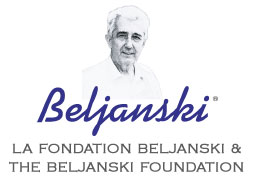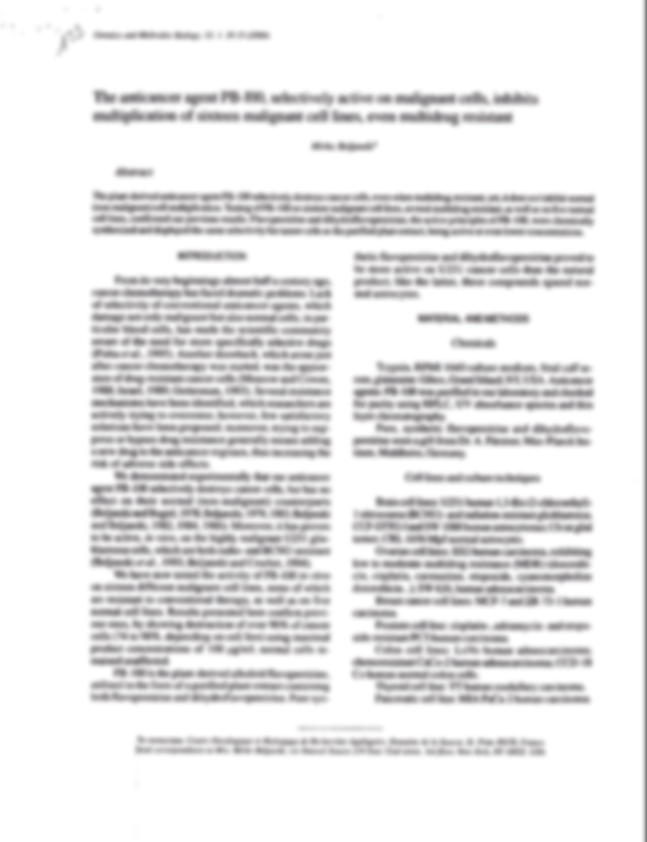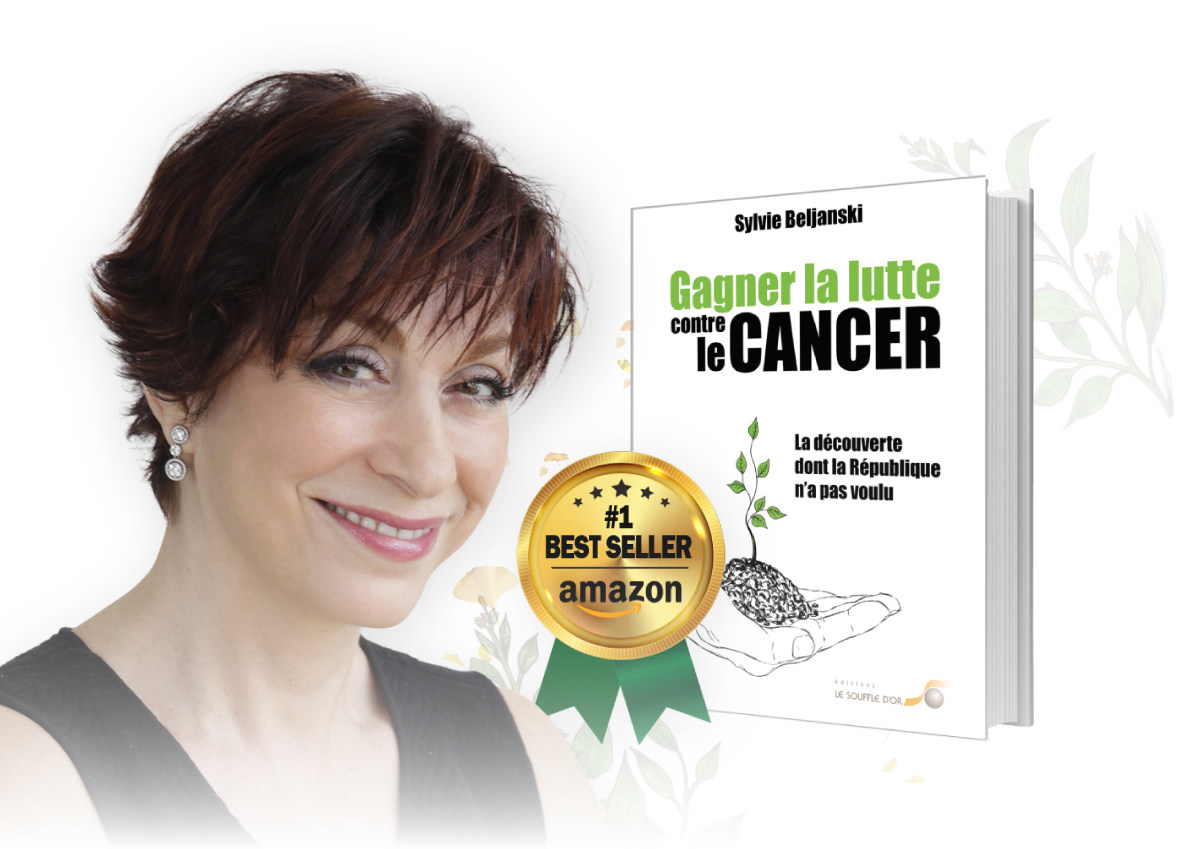60 – Synthèse in vitro de l’ADN sur une matrice d’ARN par une transcriptase d’Escherichia coli
C.R. Acad. Sci., 1972,274, pp. 2801-2804 (série D).
Available in French only
ABSTRACT: Nous avons cherché les conditions permettant de mettre en évidence l’existence d’une transcriptase de l’ARN en ADN chez E. coli K12 Hfr car ces bactéries possèdent des ARN transformants capables de provoquer chez les bactéries de diverses espèces l’apparition de nouvelles propriétés physiologiques et biochimiques stables, telle, chez Agrobacterium tumefaciens, la perte du pouvoir oncogène. Les résultats de ces recherches sont résumés dans cette publication.
ABSTRACT: Nous avons cherché les conditions permettant de mettre en évidence l’existence d’une transcriptase de l’ARN en ADN chez E. coli K12 Hfr car ces bactéries possèdent des ARN transformants capables de provoquer chez les bactéries de diverses espèces l’apparition de nouvelles propriétés physiologiques et biochimiques stables, telle, chez Agrobacterium tumefaciens, la perte du pouvoir oncogène. Les résultats de ces recherches sont résumés dans cette publication.
59 – Transformation of Agrobacterium tumefaciens into a Non-oncogenic Species by an Escheria coli RNAM
Proc. National Academy of Science (USA), 1972, 69, pp. 191-195.
Available in English only
ABSTRACT: Transforming RNA excreted by showdomycin-resistant Esherichia coli induces a persistent, heritable, and spectacular change in Agrobacterium tumefaciens B6, a bacterium that carries the oncogenic principle for tumor induction in plants. Transformants possessing new physiological and biochemical properties have completely or partially lost the capacity for tumor induction. They synthetize new ribosomes whose components are profoundly modified. On the basis of biological and biochemical characteristics, one is inclined to consider the completely transformed Agrobacterium tumefaciens as a “new species”.
ABSTRACT: Transforming RNA excreted by showdomycin-resistant Esherichia coli induces a persistent, heritable, and spectacular change in Agrobacterium tumefaciens B6, a bacterium that carries the oncogenic principle for tumor induction in plants. Transformants possessing new physiological and biochemical properties have completely or partially lost the capacity for tumor induction. They synthetize new ribosomes whose components are profoundly modified. On the basis of biological and biochemical characteristics, one is inclined to consider the completely transformed Agrobacterium tumefaciens as a “new species”.
58 – Episome à ARN ” porté par l’ADN d’Escherichia coli sauvage et showdomycino-résistant
C.R. Acad. Sci., 1971, 272, pp. 2736-2739 (série D).
Article in French
Not available online
Article in French Not available online
57 – ARN transformants porteurs de caractères héréditaires chez Escherichia coli showdomycino-résistant
C.R. Acad. Sci., 1971, 272, pp. 2107-2110 (série D).
Available in French only
ABSTRACT: Nous démontrons que des ARN “transformants” sont excrétés par des mutants qui ont la particularité de synthétiser les ARN intracellulaires riches en bases puriques. Les ARN excrétés transforment irréversiblement les bactéries sauvages en descendants qui pour l’essentiel ne se distinguent plus des mutants dont proviennent ces ARN à potentiel génétique.
ABSTRACT: Nous démontrons que des ARN “transformants” sont excrétés par des mutants qui ont la particularité de synthétiser les ARN intracellulaires riches en bases puriques. Les ARN excrétés transforment irréversiblement les bactéries sauvages en descendants qui pour l’essentiel ne se distinguent plus des mutants dont proviennent ces ARN à potentiel génétique.
56 – Transcription par la polynucleotide phosphorylase de l’ARN associé à l’ADN d’Escherichia coli
C.R. Acad. Sci., 1971, 273, pp. 827-830 (série D).
Available in French only
ABSTRACT: Nous montrons ici qu’in vitro la PNPase des bactéries sauvages utilise comme matrice un ARN porté par l’ADN (épisome à ARN) de ces mêmes bactéries ainsi que l’ARN transformant excrété par les bactéries showdomycino-résistantes. Les caractéristiques de ces ARN ont été précédemment décrites.
ABSTRACT: Nous montrons ici qu’in vitro la PNPase des bactéries sauvages utilise comme matrice un ARN porté par l’ADN (épisome à ARN) de ces mêmes bactéries ainsi que l’ARN transformant excrété par les bactéries showdomycino-résistantes. Les caractéristiques de ces ARN ont été précédemment décrites.
55 – Drastic Alteration of Ribosomal RNA and Ribosomal Proteins in Showdomycin-Resistant Escherichia Coli
Proc. National Acacademy of Science (USA), 1971, 68, pp. 491-495.
Available in English only
ABSTRACT: In a mutant of Escherichia coli resistant to showdomycin, both the 50S and 30S ribosomal subunits contain RNA species in which the purine concentration greatly exceeds that of pyrimidines. The same is true for total rapidly-labeled RNA. The modified ribosomal RNA hybridizes poorly with homologous DNA, which is apparently unchanged in base composition. Acrylamide gel electrophoresis of mutant ribosomal proteins shows a highly altered protein pattern for both ribosomal subunits, although the activity of these ribosomes is not decreased.
ABSTRACT: In a mutant of Escherichia coli resistant to showdomycin, both the 50S and 30S ribosomal subunits contain RNA species in which the purine concentration greatly exceeds that of pyrimidines. The same is true for total rapidly-labeled RNA. The modified ribosomal RNA hybridizes poorly with homologous DNA, which is apparently unchanged in base composition. Acrylamide gel electrophoresis of mutant ribosomal proteins shows a highly altered protein pattern for both ribosomal subunits, although the activity of these ribosomes is not decreased.
54 – Showdomycine et biosynthèse d’ARN non complémentaires de l’ADN
Annales Institut Pasteur, 1970, 118, pp. 253-276
Available in French only
Summary in English
ABSTRACT: Showdomycin, even at concentrations which do not affect bacterial growth, causes in E. coli, B. cereux and A. faecalis, a massive biosynthesis of rapidly labelled RNAs, which are no longer complementary to DNA. In addition in E. coli, the more thoroughly investigated organism, even non-inhibitory concentrations of the antibiotic provoke the synthesis of ribosomal 23 S RNA with a base ratio very different (excess of A and G nucleotides), from that of 16 S RNA and 4 S RNA. A similar change in RNA composition is observed in a showdomycin resistant mutant of E. coli, the growth rate of which is not lower than that of the wild type. RNA polymerase DNA dependent from the mutant has a very reduced specific activity; polynucleotide phosphorylase from the same mutant has new properties. Polynucleotide phosphorylase could in vivo be responsible for the synthesis of the modified RNAs.
ABSTRACT: Showdomycin, even at concentrations which do not affect bacterial growth, causes in E. coli, B. cereux and A. faecalis, a massive biosynthesis of rapidly labelled RNAs, which are no longer complementary to DNA. In addition in E. coli, the more thoroughly investigated organism, even non-inhibitory concentrations of the antibiotic provoke the synthesis of ribosomal 23 S RNA with a base ratio very different (excess of A and G nucleotides), from that of 16 S RNA and 4 S RNA. A similar change in RNA composition is observed in a showdomycin resistant mutant of E. coli, the growth rate of which is not lower than that of the wild type. RNA polymerase DNA dependent from the mutant has a very reduced specific activity; polynucleotide phosphorylase from the same mutant has new properties. Polynucleotide phosphorylase could in vivo be responsible for the synthesis of the modified RNAs.
53 – Synthèse chez les bactéries d’ARN nouveaux n’étant pas la copie de l’ADN
C.R. Acad. Sci., 1969, 269, pp. 240-243 (série D).
Available in French only
ABSTRACT: Les faits présentés ici montrent que la showdomycine à faible dose fait apparaître chez plusieurs espèces bactériennes des ARN à marquage rapide (ARN-mr) nouveaux, et par son effet mutagène puissant transforme irréversiblement les bactéries d’E. Coli, leur conférant de nouvelles propriétés.
ABSTRACT: Les faits présentés ici montrent que la showdomycine à faible dose fait apparaître chez plusieurs espèces bactériennes des ARN à marquage rapide (ARN-mr) nouveaux, et par son effet mutagène puissant transforme irréversiblement les bactéries d’E. Coli, leur conférant de nouvelles propriétés.
52 – Synthèse dans Escherichia coli des ARN dont la structure primaire diffère totalement de celle de l’ADN
C.R. Acad. Sci., 1968, 267, pp. 1058-1060 (série D).
Available in French only
ABSTRACT: Nos résultats présentés ici montrent clairement que sans modifier la synthèse et la structure primaire de l’ADN on peut induire les cellules Escherichia Coli à synthétiser deux types d’ARN (ARN à marquage rapide et ARN ribosomique 23 S) dont la structure primaire diffère profondément de l’ADN.
ABSTRACT: Nos résultats présentés ici montrent clairement que sans modifier la synthèse et la structure primaire de l’ADN on peut induire les cellules Escherichia Coli à synthétiser deux types d’ARN (ARN à marquage rapide et ARN ribosomique 23 S) dont la structure primaire diffère profondément de l’ADN.
51 – Isolement et caractérisation d’un ARN matriciel d’Alcaligenes faecalis
C.R. Acad. Sci., 1968, 266, pp. 845-847
Available in French only
ABSTRACT: Les résultats présentés ici montrent les caractéristiques d’un ARN matriciel 5,5 S présent dans une fraction d’ARN d’Alcaligenes f. qui contient des ARN dont les coefficients de sédimentation varient de 3,8 à 7,0 S. Nos données permettent d’affirmer que l’ARN matriciel diffère indiscutablement du ARN de transfert et du ARN ribosomal.
ABSTRACT: Les résultats présentés ici montrent les caractéristiques d’un ARN matriciel 5,5 S présent dans une fraction d’ARN d’Alcaligenes f. qui contient des ARN dont les coefficients de sédimentation varient de 3,8 à 7,0 S. Nos données permettent d’affirmer que l’ARN matriciel diffère indiscutablement du ARN de transfert et du ARN ribosomal.




